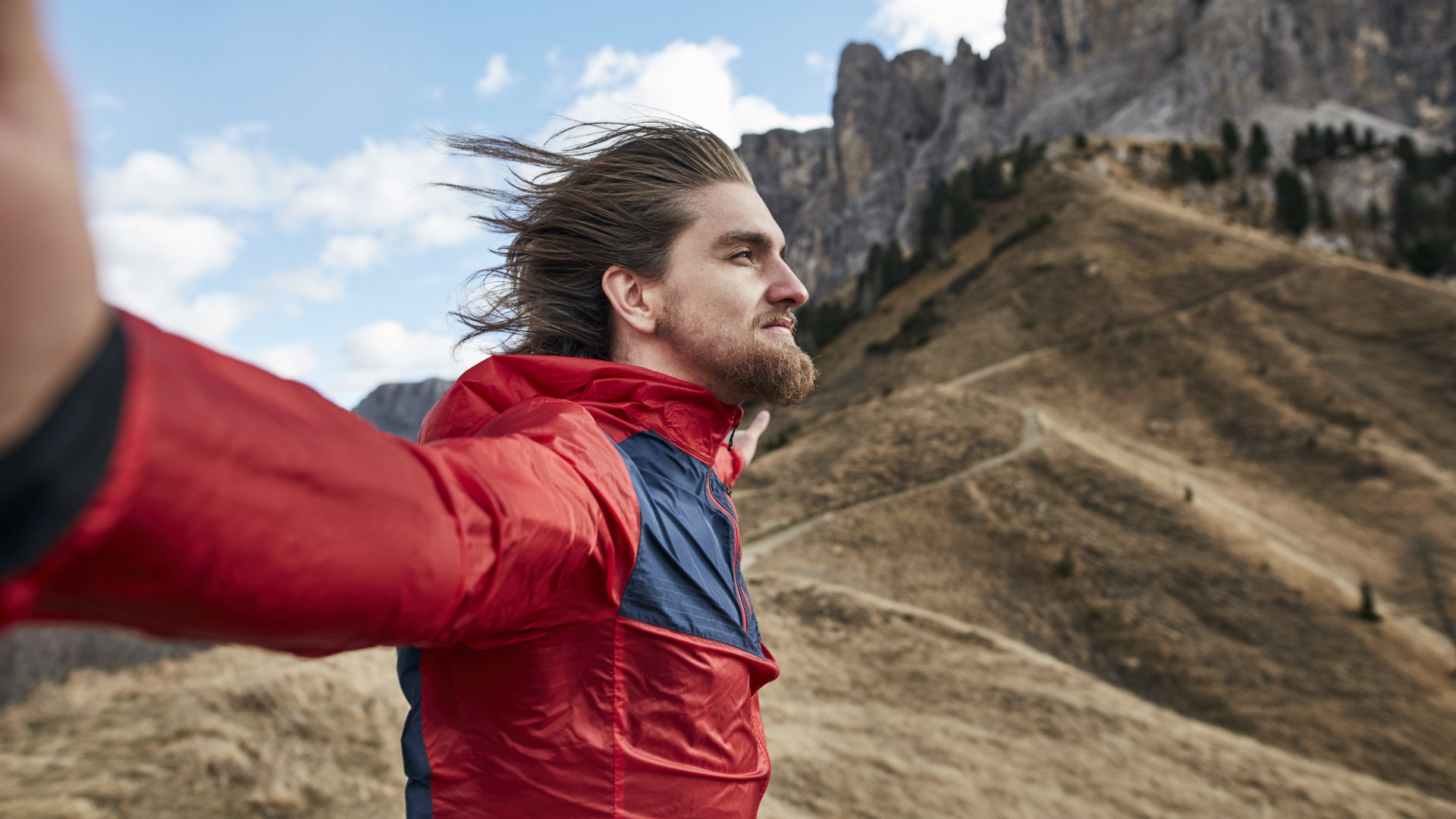What makes your hiking gear windproof anyway?
Whether you like exploring exposed ridges and loft summits or prefer coastal capers, you’re likely to be keen on the idea of blocking out a cold wind

From your down jacket to your best hiking pants, your outdoor gear has big shoes to fill. It needs to keep you warm, but let you dump heat when you break a sweat. It has to be robust and keep you warm in cold weather, but also lightweight and packable. Most importantly, it must fend off the worst of the weather.
By now, if you’re a hiker or any kind of outdoor enthusiast, you’ll have learned all about the virtues of waterproof gear. But lots of the clothing you might be considering – jackets, ski pants, hiking gloves – come with the word “windproof” on the label. Whether you like exploring exposed ridges and loft summits or prefer coastal capers, you’re likely to be keen on the idea of blocking out a cold wind. But what makes your hiking gear windproof anyway? And how does it differ from waterproof and wind-resistant clothing?
Why do you need windproof hiking gear?
As we explain in our article on windchill, the wind can make a massive difference in your comfort and safety when you’re out on a gusty hike. Though the air temperature in the weather forecast might look like a manageable 35 degrees on a winter hike, your body loses heat through convection and a high wind can strip away your body heat leaving you more vulnerable to cold-related conditions like frostbite and hypothermia.
Covering your skin with effective hiking layers is your first line of defense against windy conditions, but it’s also vital to ensure that the outermost layer is windproof, and as we'll explain in a moment, that means hiking on a windy day with just a fleece jacket won't cut it. This one simple addition to your hiking wardrobe can drastically change how comfortable you are on a cold mountainside, even if your jacket and pants have no actual insulating value, and turn a miserable day into an enjoyable adventure.

What makes a fabric windproof?
There are several ways that a garment can be designed to block the wind. First, the construction of the fabric can be dense, as in a waxed cotton jacket, or multi-layer, but these days you can also find really lightweight windbreakers which are constructed using fabric with a very tight weave to block the wind from entering, and your body heat from escaping.
Windproof jackets, pants and gloves may also be treated with a windproof coating, however it’s important to note that these treatments can wear off over time and shouldn’t be the only windproof factor.
Is windproof the same as wind resistant?
In the US, windproofing is measured in cubic feet per meter, and manufacturers typically assess how much airflow a 30-mile-per-hour wind can pass through one square foot of material. The lower the number, the better the windproofing.
All the latest inspiration, tips and guides to help you plan your next Advnture!
As you might already have noticed on your adventures, fleeces have a very high windproof value (usually around 60 CFM) which means they let in a lot of cold air, and while they are great mid layers for insulation, you’ll want another layer on top to deal with the draft.
If you’re eyeing up a garment that’s rated as “wind-resistant,” this isn’t actually an official designation, so it can mean a lot of things, but basically it will let in less wind than a fleece but more than a windproof item. Garments like softshell jackets and hiking pants usually fall within this range.
For a garment to be rated as windproof, it must let in less than one cubic feet of wind per meter. If you’re unsure about the windproofness of a garment, an easy test is to hold it up to your mouth and try blowing through it. If you can’t, it’s windproof and you should stay warm on your hike.

What’s the difference between windproof and waterproof clothing?
Most waterproof jackets and rain pants are natural wind barriers, so you don’t need to also layer a windbreaker over the top of them. If you tend to hike somewhere with a lot of wet weather, it probably makes sense to just invest in waterproof gear and feed two birds with one seed, however there is an argument for relying on windproof gear at times.
Windproof jackets and pants tend to be more breathable than their fully waterproof counterparts, and will usually fend off a light sprinkle, so if you’re not too worried about the rain and planning on working up a sweat, try windproof layers instead. Windbreakers and the like also tend to be much lighter and more packable than rain coats, so they’re a great option for active travel too.
Julia Clarke is a staff writer for Advnture.com and the author of the book Restorative Yoga for Beginners. She loves to explore mountains on foot, bike, skis and belay and then recover on the the yoga mat. Julia graduated with a degree in journalism in 2004 and spent eight years working as a radio presenter in Kansas City, Vermont, Boston and New York City before discovering the joys of the Rocky Mountains. She then detoured west to Colorado and enjoyed 11 years teaching yoga in Vail before returning to her hometown of Glasgow, Scotland in 2020 to focus on family and writing.

